There was one absolute certainty when I arrived in Manila, and that was to eat my way around Chinatown. If you are a foodie like myself, then taking a Chinatown food tour in Manila is a must. There is no need to visit on an organised tour, it’s easy to visit independently. But you always learn so much more with a guide.
Binondo is home to the oldest Chinatown in the World. That is outside of China of course. In China they would just call it “heading down the street to go shopping”.
It’s a vibrant part of Manila with a vast array of food options on offer. One minute you will be carefully navigating traffic filled streets, trying not to get run over. Next moment you will turn a corner and be alone in a lane. Turn the next corner and you are faced with an alley filled with grocery stalls.

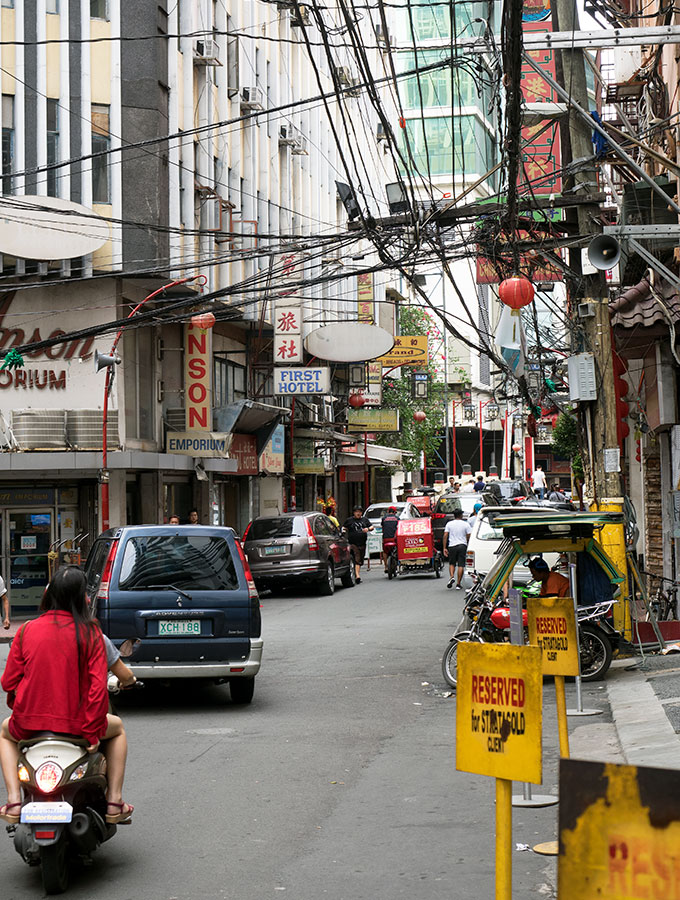 What to expect when you go on a Chinatown Food Tour in Manila
What to expect when you go on a Chinatown Food Tour in Manila
Firstly expect to eat a lot. All the tours on offer are walking tours. This is the best way to get around, plus you are walking off each course as you go.
It will be hot and there isn’t much shelter from the sun or rain. Make sure you are prepared with hat, sunscreen, umbrellas and water. I also suggest wearing enclosed comfortable walking shoes.
Expect to be approached by children or adults begging. Beggars are a part of Manila life, and Binondo is no exception.
Will you be safe? Yes, very safe. But of course do keep an eye on your belongings and be travel smart.
Will you get sick from the food? No, gorge yourself silly.
Any reputable organised Chinatown food tour in Manila will take you to places that are hygienically safe. What our guides were very conscious of was that we didn’t drink the local water, avoid ice in our drinks and always use a straw. Not great for the tour organisers if you end up with dysentery on Chinatown food tour in Manila.
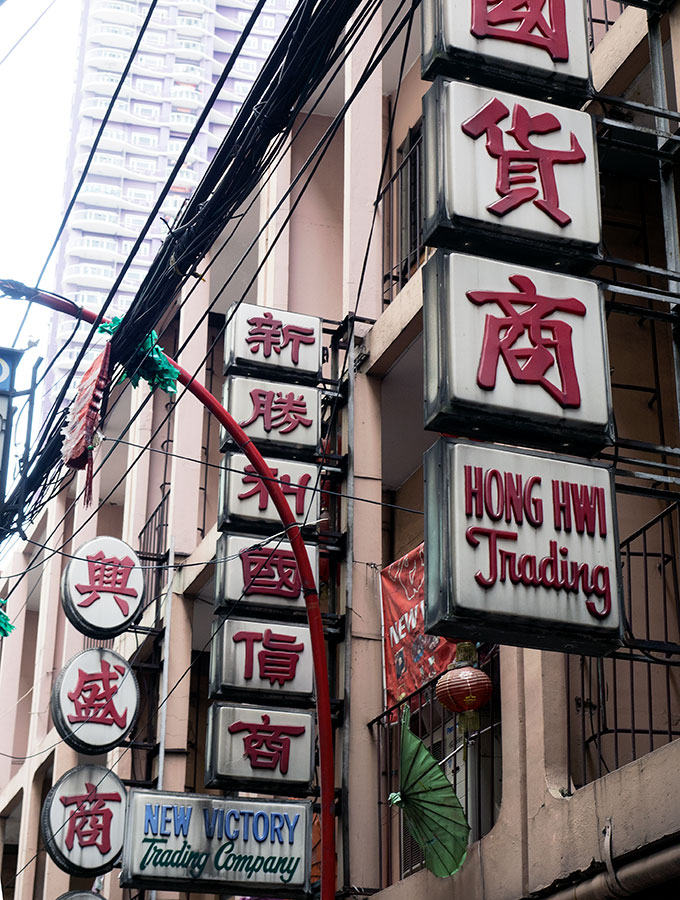
 The starting point of our Chinatown Food Tour in Manila
The starting point of our Chinatown Food Tour in Manila
All the Chinatown food tours seem to start at Binondo Church. Doesn’t matter if you are meeting the tour guides here or if being picked up from your accommodation.
It makes sense, as it is the most notable landmark in the area. Binondo Church is also known as Minor Basilica of Saint Lorenzo Ruiz, and Our Lady of the Most Holy Rosary Parish. The British destroyed the original church by bombing it back in 1762. The church was rebuilt in granite on the same site, completion in 1852. Then the second World War came around and the church was severely damaged, with only the octagonal belfry and western façade surviving.
Are you ready to start drooling as I share our Chinatown Food tour in Manila?
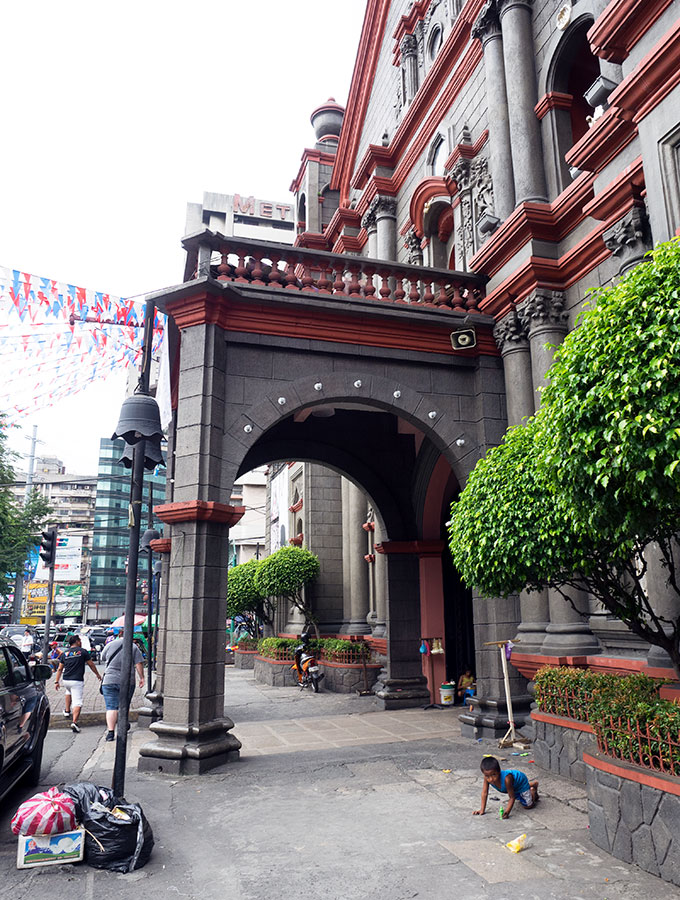
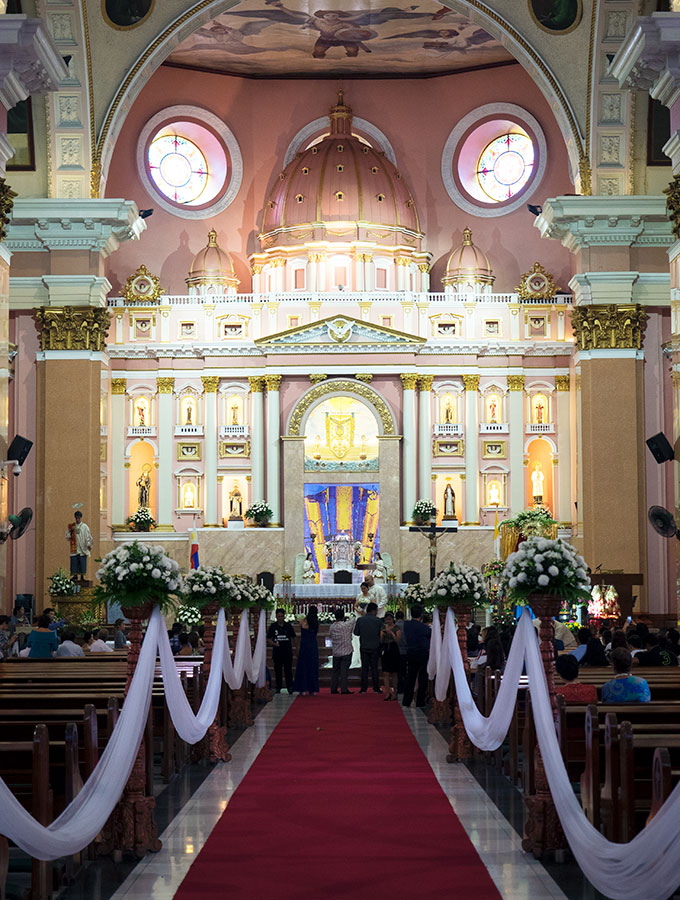
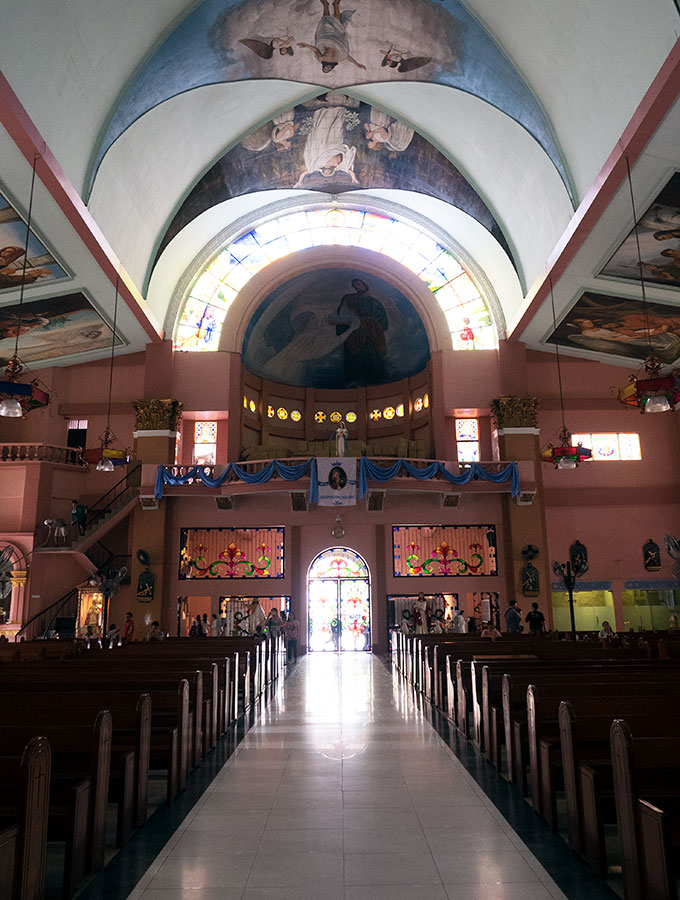
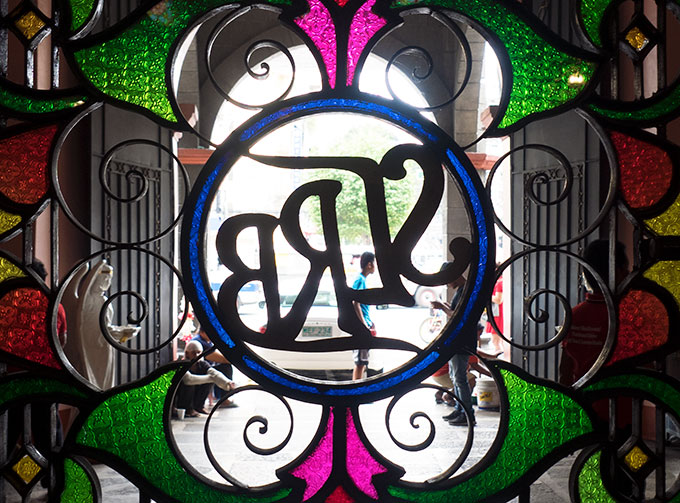
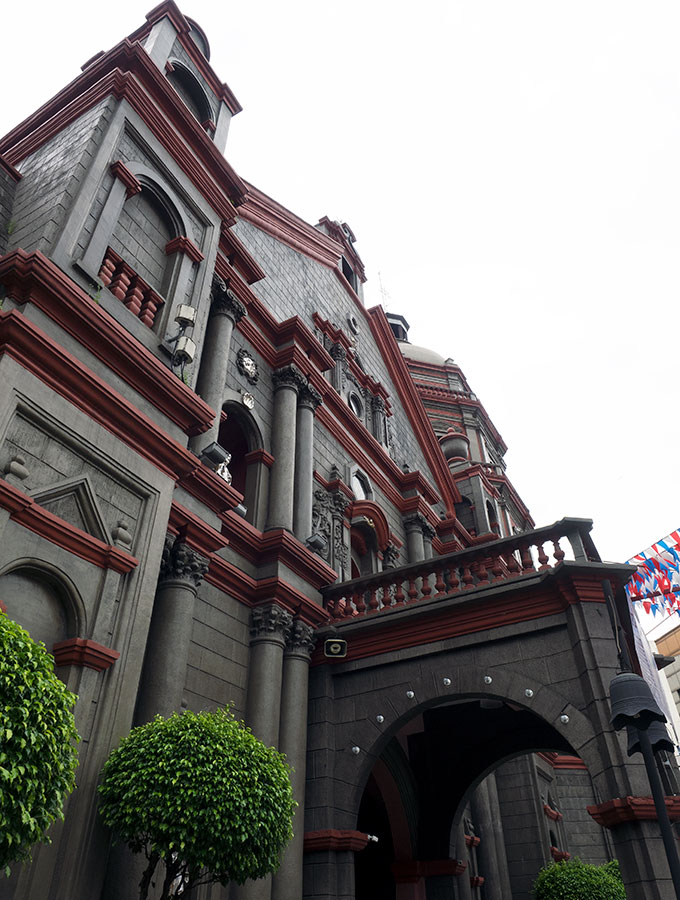 Chinatown Food tour of Manila – 1st Stop: Dong Bei Dumpling
Chinatown Food tour of Manila – 1st Stop: Dong Bei Dumpling
Dong Bei Dumpling is the hot spot in Chinatown to eat boiled pork and chive dumplings called Kuchay. You can watch the staff busily make hundreds of them at one of the dining tables in the teeny tiny restaurant.
It’s fascinating to watch them work, they are so quick at rolling, stuffing and folding. They are juicy tasty little dumplings and it would be quite easy to polish off a plate solo. They are simply eaten dipped in mixture of vinegar and soy.
You can watch a little of their dumpling making action here.
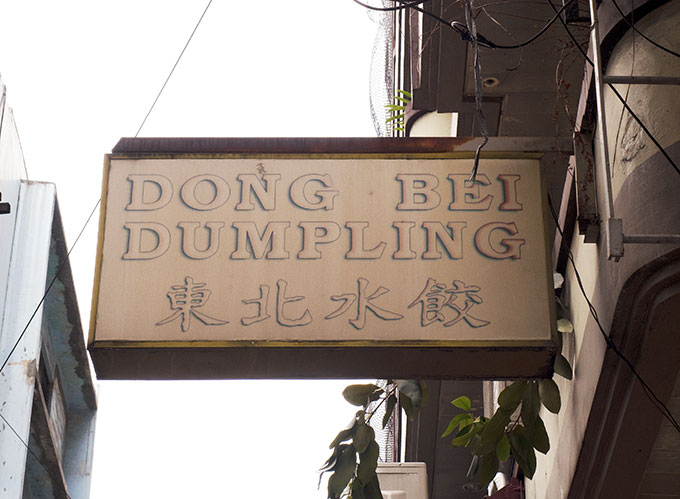
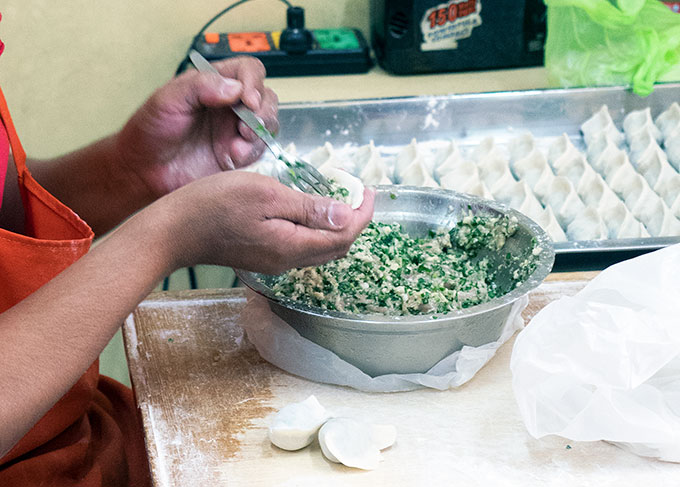


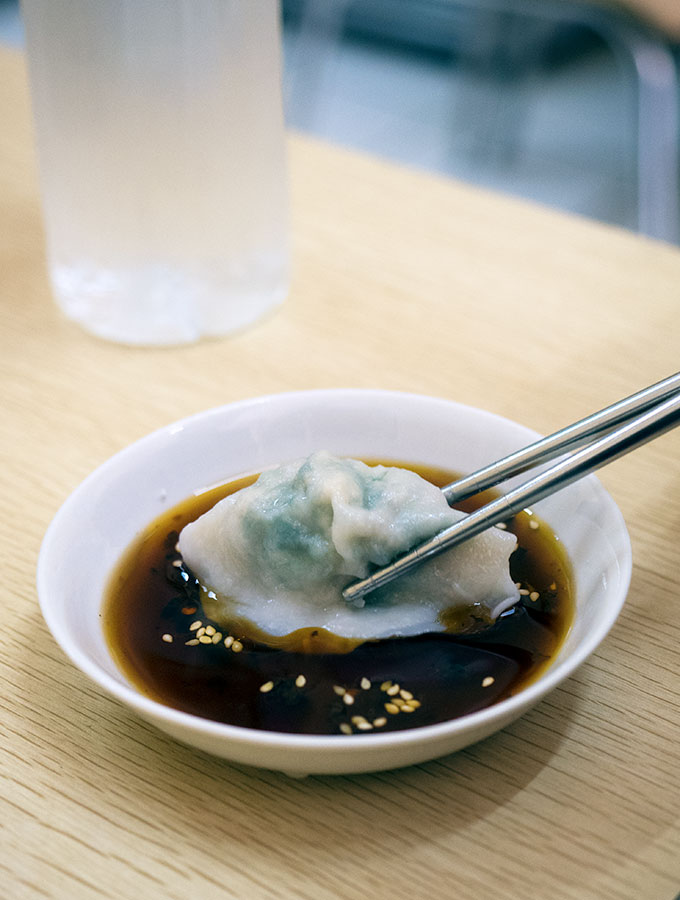 Chinatown Food tour of Manila – Why all the Fire Engines?
Chinatown Food tour of Manila – Why all the Fire Engines?
As you walk around you will notice fire engines parked everywhere. The fire engines are sponsored by local business owners and are managed by Chinese volunteer organisations. If there is a fire in Chinatown it is impossible to get a fire truck there in time to extinguish it. Manila traffic is terribly slow and congested, as are the streets of Binondo. There have been a few devastating fires in the area and this is their solution.
But with electricity lines like the ones below, it’s no wonder they have fires! The wires are a crazy entangled mess, everywhere!
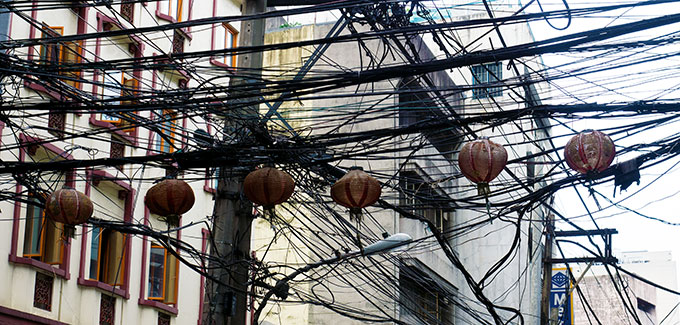

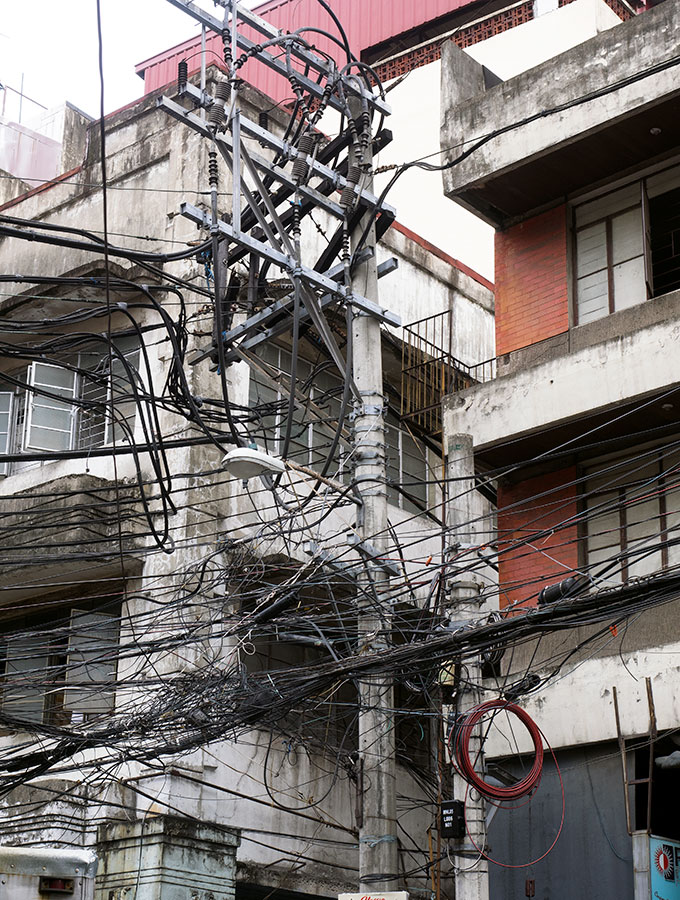 Chinatown Food tour of Manila – 2nd Stop: Café Mezzanine
Chinatown Food tour of Manila – 2nd Stop: Café Mezzanine
With all the fire engines in the area it makes sense that there is a volunteer firemen’s coffee shop. All revenue is donated to the Binondo Paco Fire Search and Rescue Brigade.
Café Mezzanine is located above the Eng Bee Tin Chinese Deli (famous for ube hopia). The Eng Bee Tin group are also the owners of the café as well as the purple fire engines you see around Chinatown.
We aren’t here for the firemen, instead we are here for their “famous” Soup #5. Our guides try to freak me out by asking me to try the soup first and then guess what the mystery ingredient is. Obviously they didn’t want me to guess it, so they could do the big reveal and watch me real back in horror over what I had just eaten.
Unfortunately not much shocks me food wise these days and it was very easy for me to name the mystery ingredient. The bulls’ testicles and penis were pretty hard to miss.
How did it taste? The broth is amazing, really flavoursome. The testicles are like soft meatballs, yes, seriously they are, and really, that is what they are. I didn’t bother with the penis.
Why eat it? As mentioned the broth is really tasty, but it’s eaten (mainly by men) for the soup’s aphrodisiac properties. Did I feel overly amorous after eating the soup? No, I didn’t.
We also tried Kikiam, which is a Chinese style sausage. Pork based sausage wrapped in bean curd sheets (tawpe), steamed and then fried. Really quite delicious and like a lot of Filipino food, slightly sweet.

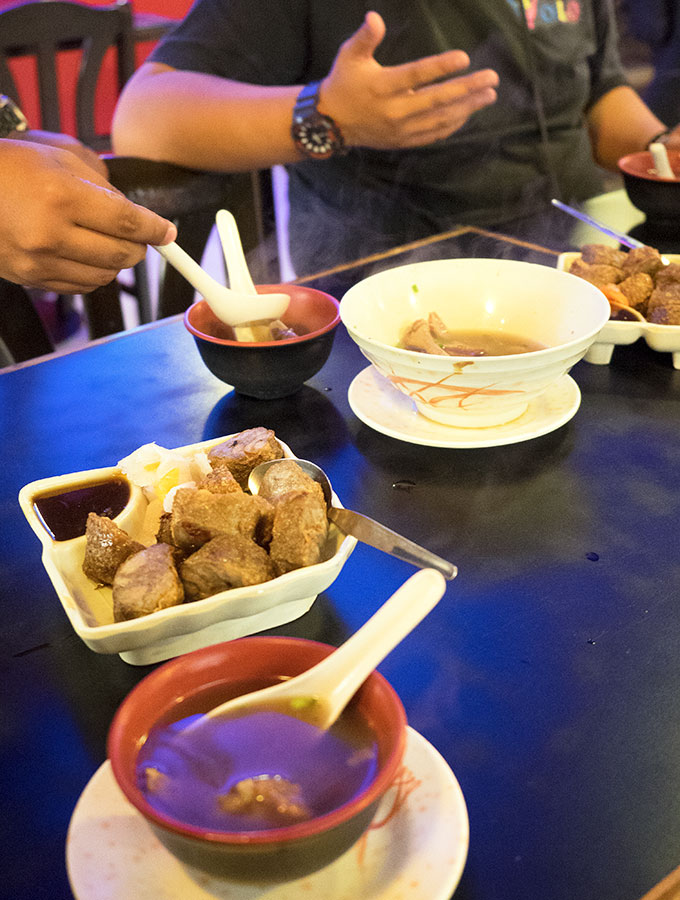
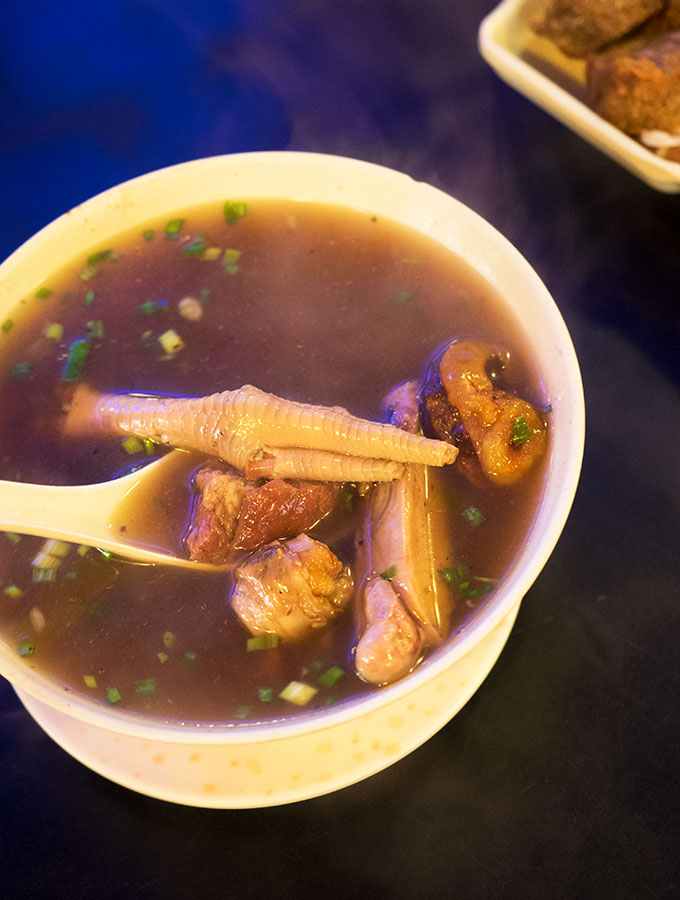
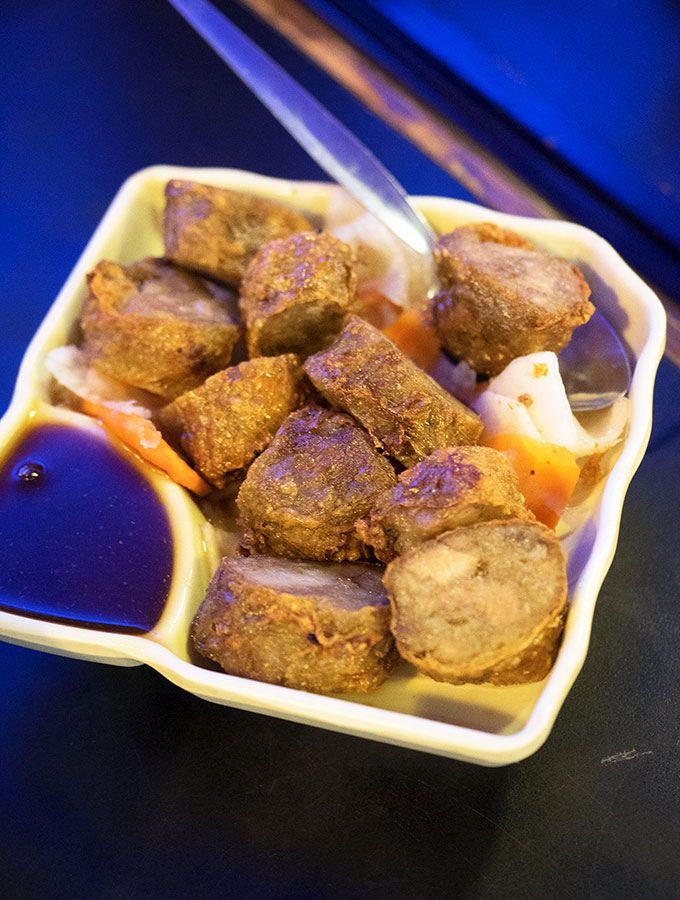 Chinatown Food tour of Manila – 3rd Stop: Sincerity Café & Restaurant
Chinatown Food tour of Manila – 3rd Stop: Sincerity Café & Restaurant
It’s only after I got back to Australia did I learn that Sincerity Café & Restaurant are known for their fried chicken. Delicious, crunchy, Sincerity fried chicken. Apparently it’s the best fried chicken in metro Manila, sadly didn’t have the chicken.
Instead we had the second most popular dish on their menu, oyster cake. It’s more like an oyster omelette or a frittata. The egg mixture is filled generously with oysters, bean sprouts and other vegetables. You eat it with tomato sauce/ketchup (surprisingly goes well).
If you are a regular reader of Belly Rumbles you will know I go gaga over oysters, I love them. I didn’t love the oyster cake. The crisp outer edges of the cake were the highlight and enjoyable. As you worked your way to the centre it became gloopy.
Sticky rice dumplings called Machang were also tried. Rice is mixed with pork, chunks of pork fat and shitake mushroom, then wrapped in banana leaves and cooked.
I have tried various versions of Machang before, and I have never been a fan. I felt the same way about these ones.
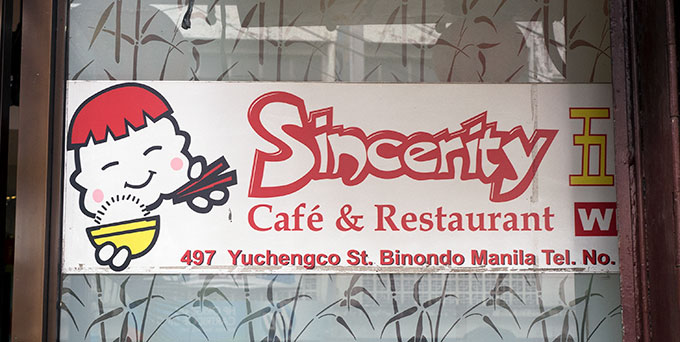
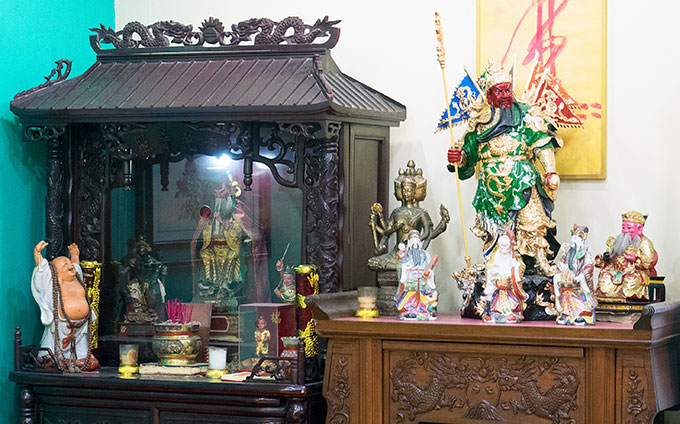
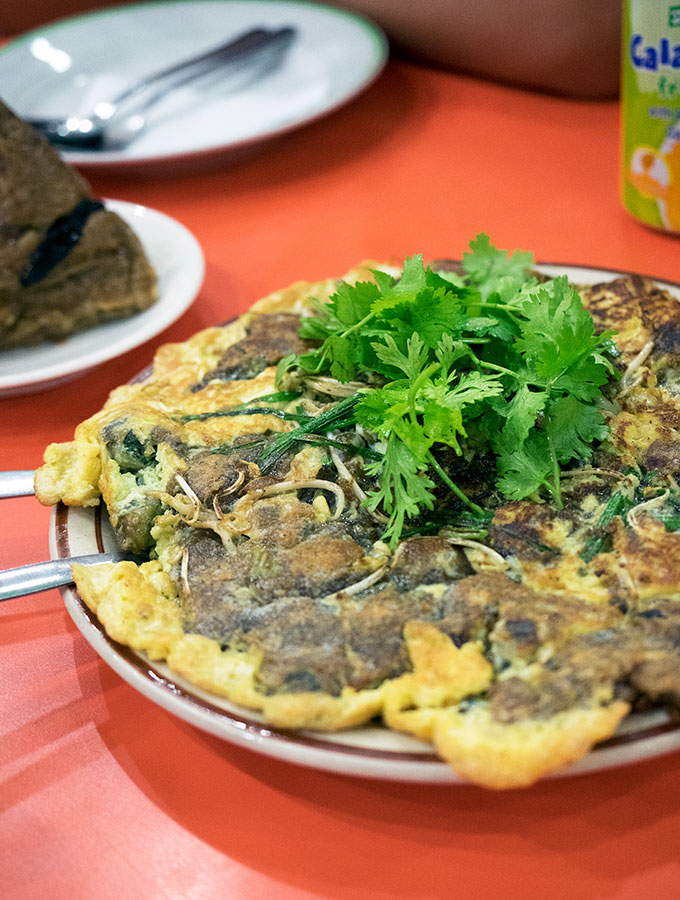
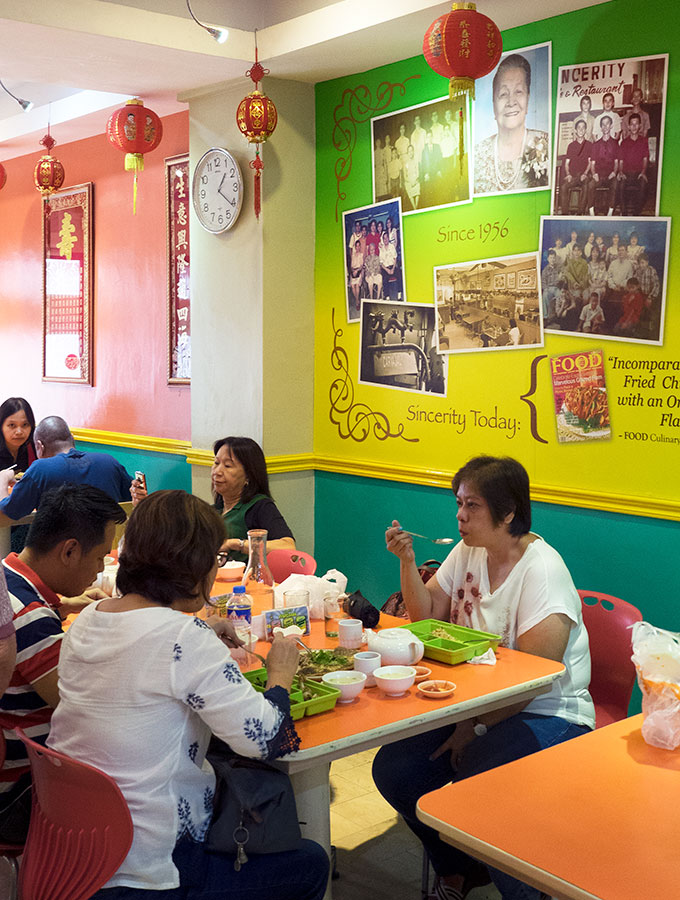
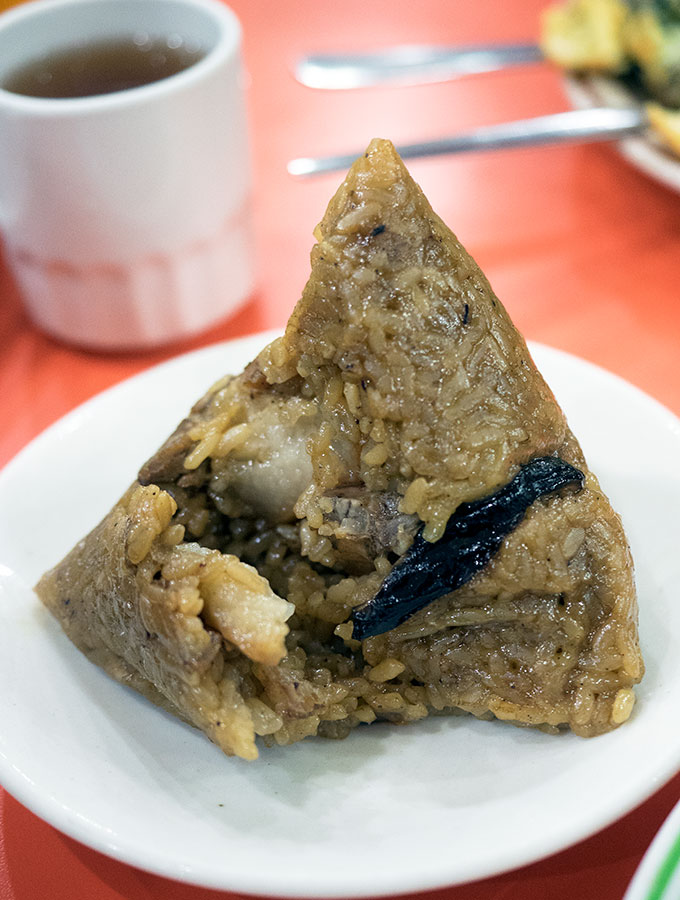
 Chinatown Food tour of Manila – 4th Stop: Quick Snack
Chinatown Food tour of Manila – 4th Stop: Quick Snack
We head to Quick Snack to try lumpia, the version we have of these Filipino spring rolls are fried. They are also the largest spring rolls I have ever seen. I’m a big fan and taste nothing like a Chinese spring roll. Filled with pork, onion, carrot and I am sure s few other things, there is an element of sweetness, and it would be hard to stop at one.
Also ordered are Filipino pork empanadas. A deep fried love child of Filipino and Spanish cuisine, quite tasty and again a little sweet. Filled with pork, carrot and other goodies.
The lumpia from Quick Snack, along with the Kuchay at Dong Bei Dumpling, are my two favourite dishes from our Chinatown food tour in Manila.
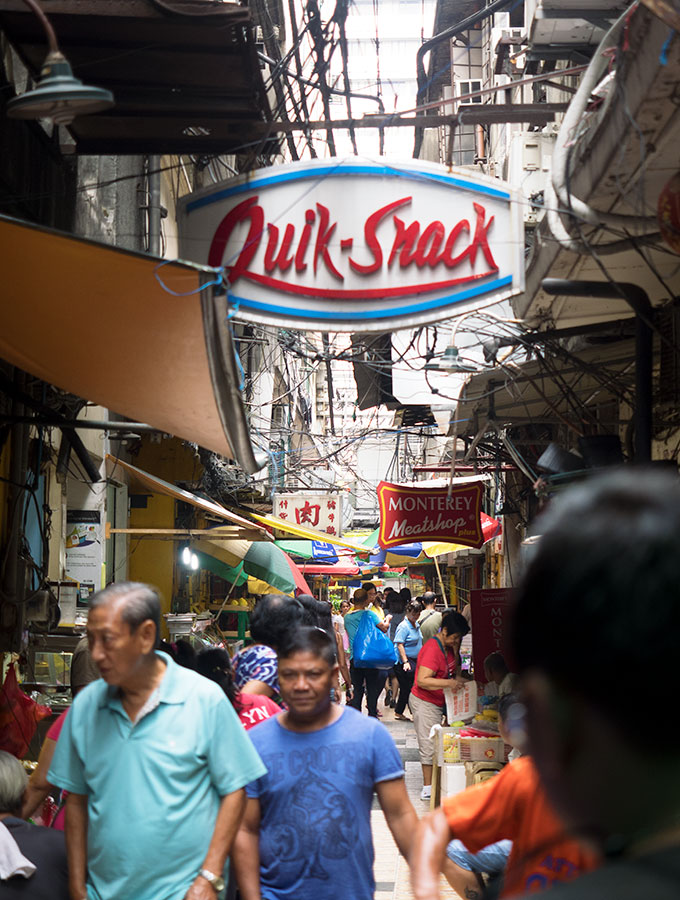
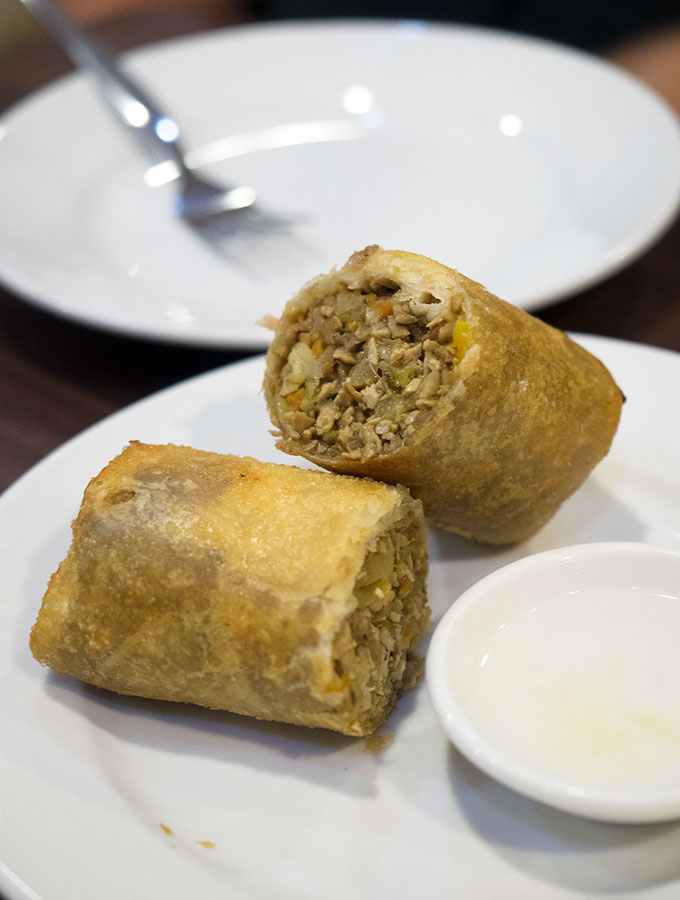
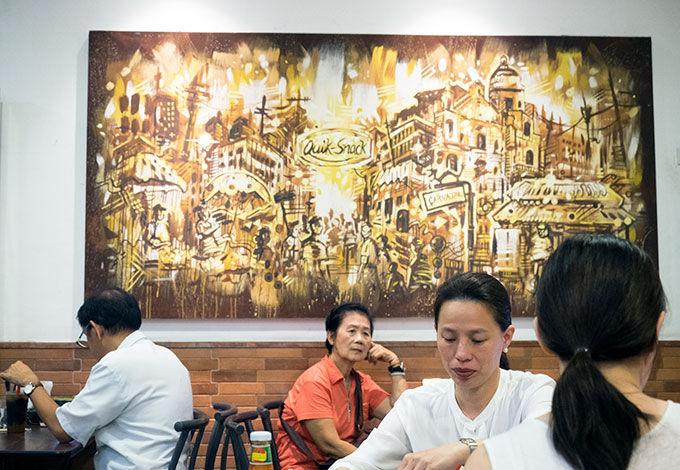
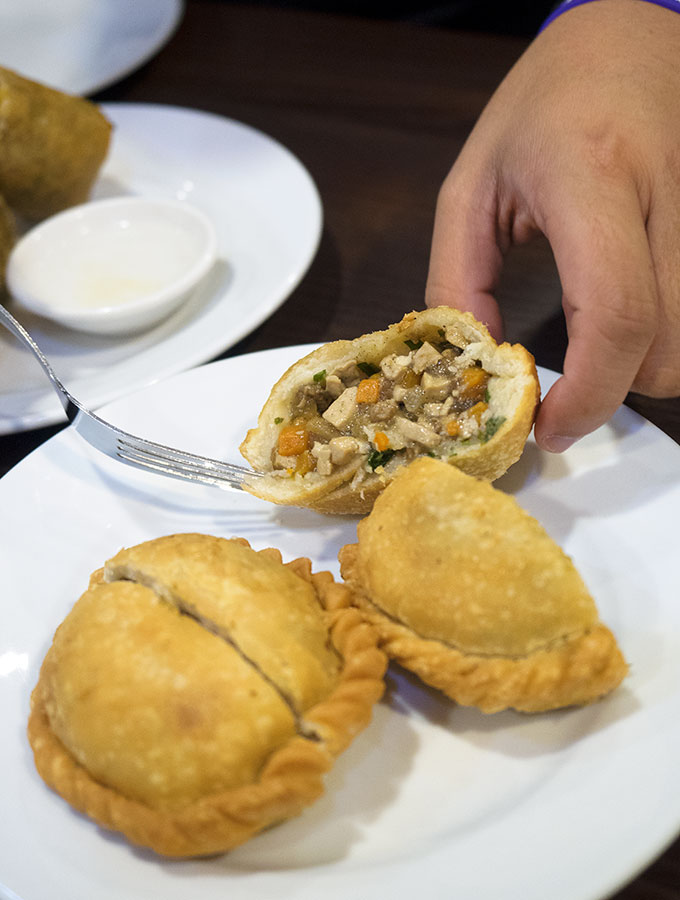 Chinatown Food tour of Manila – 5th Stop: Shanghai Fried Siopao
Chinatown Food tour of Manila – 5th Stop: Shanghai Fried Siopao
Here you will find an array of snacks to grab and go, but as they name suggests, they specialise in fried Siopao.
Siopao is a steamed pork bun that is then fried on the bottom only. The bun is soft and fluffy with a fried underneath for contrast. The pork filling is like a solid soft meatball with quite a subtle sweet salty flavour.
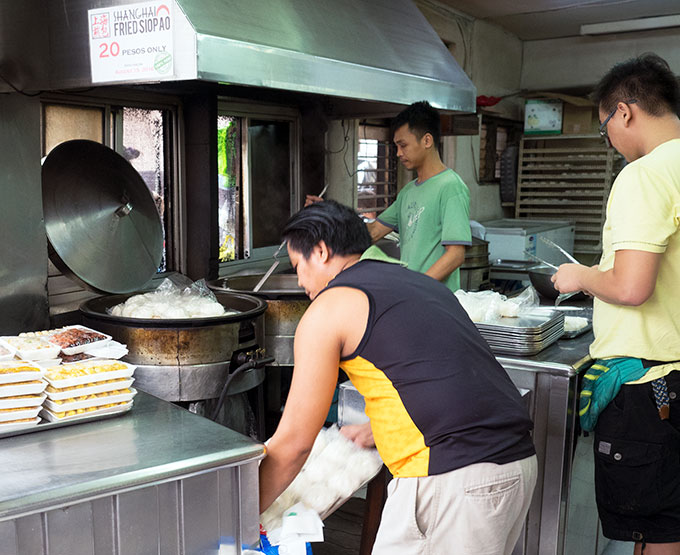
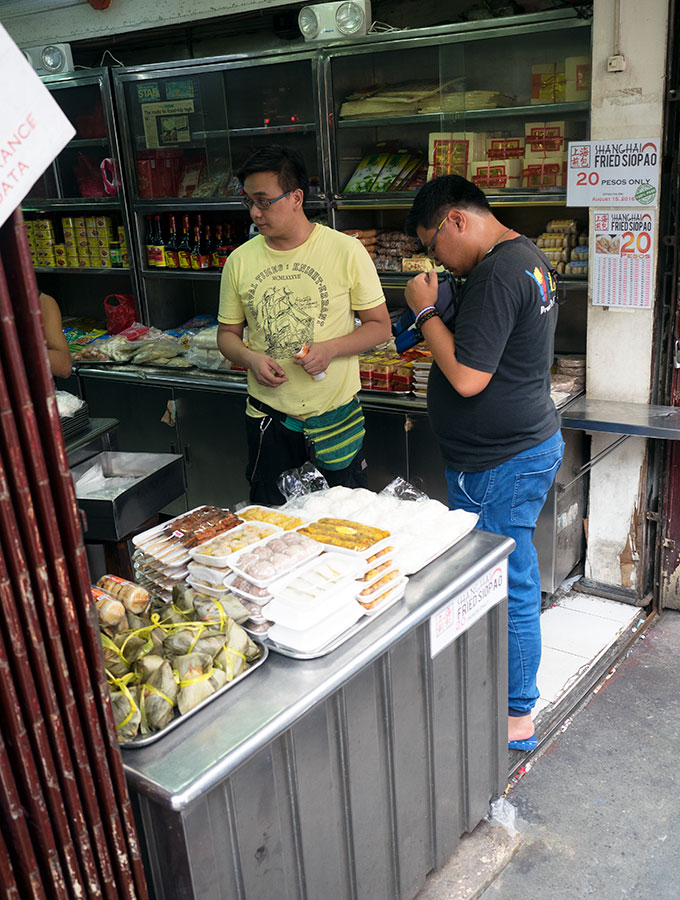 Chinatown Food tour of Manila – A lot to take in
Chinatown Food tour of Manila – A lot to take in
Keep your eyes peeled as you walk around, as there is so much happening and so much to see. People preparing food on the street like the guy below peeling long thin eggplants (aubergine). Numerous fruit and vegetable vendors, a guy stripping sugarcane to be used in dishes or made into juice, people selling seafood, people selling basically anything that is deemed edible.
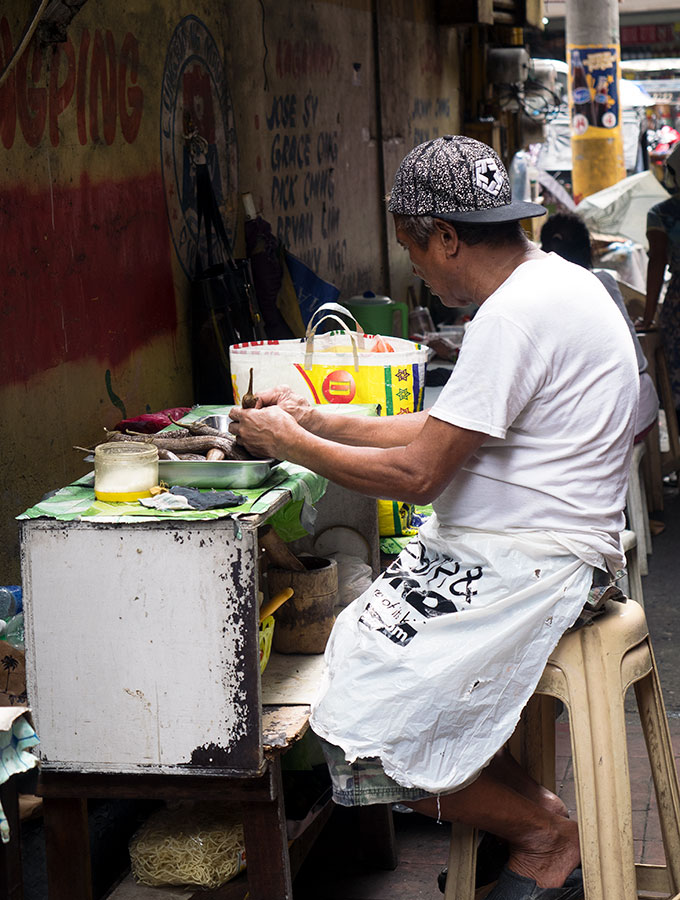
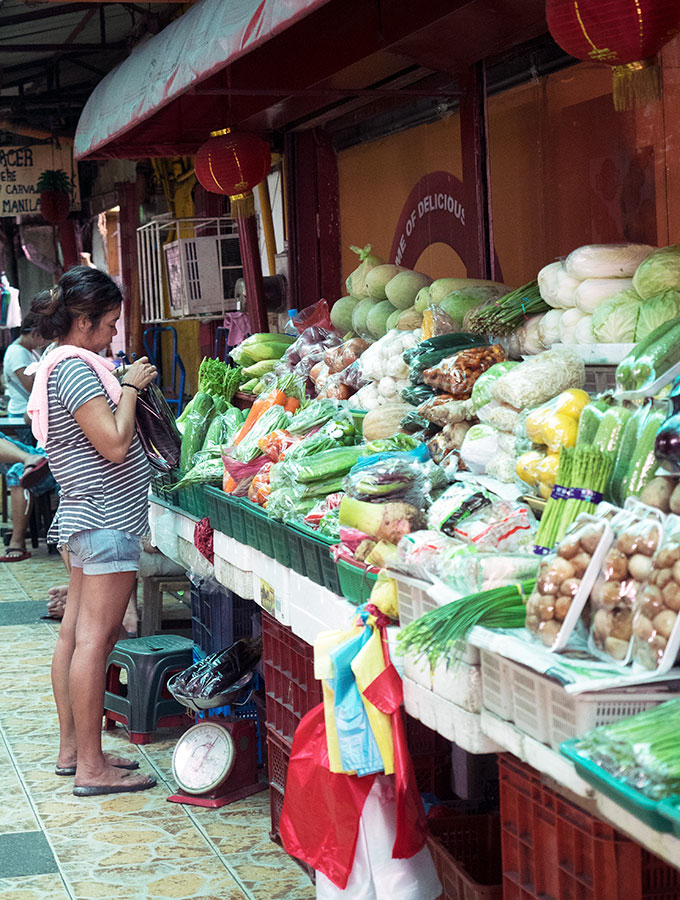
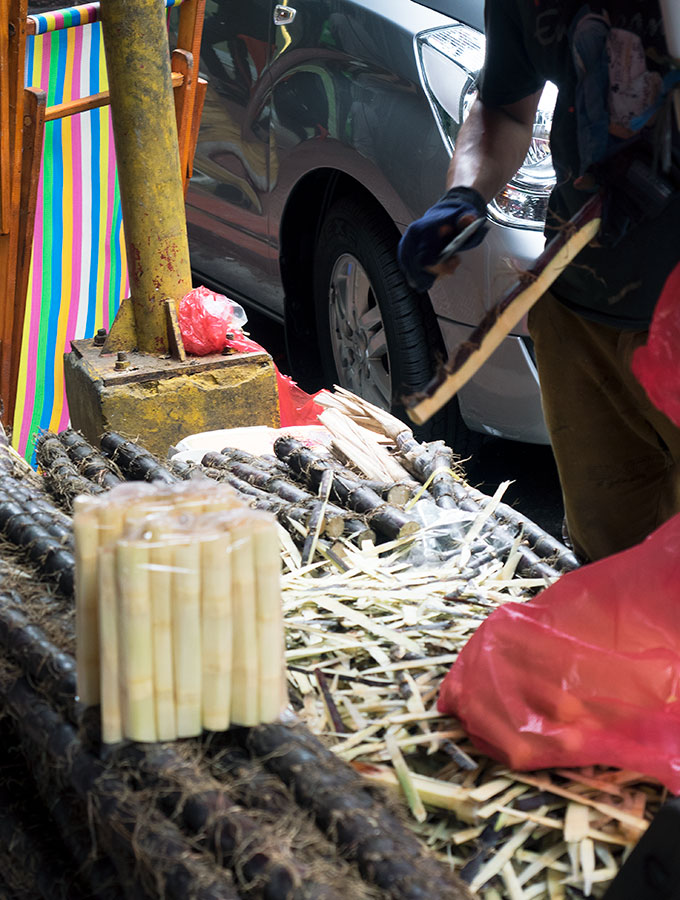 Chinatown Food tour of Manila – 6th Stop Estero Fast Food Stalls
Chinatown Food tour of Manila – 6th Stop Estero Fast Food Stalls
Our second last stop on our food crawl and we are stuffed. I’m not sure if we actually ate at Estero Fast Food or if it was called LGA. I just know it wasn’t air conditioned, therefore I am questioning the sign. We were meant to eat at a restaurant further up that was, but it was closed. So maybe that was Estero Fast Food?
In any case we ate salt and pepper fried frogs’ legs from the place in the photos.
The first question I ask my guides “the frogs didn’t come from there did they?” As “estero” suggests the food stalls are situated along an estuary. Estero de la Reina, which flows off the Pasig River.
The water is filthy grey, there is rubbish floating in it, it’s very polluted. The perfect place to eat don’t you think?
You can’t actually see the estuary from the eating area, and it is quickly put to the back of your mind. And no, of course the frogs aren’t fished out of the estuary (doubt anything would actually be able to survive in it).
I was pretty excited about this dish. Frogs’ legs don’t really taste strongly of anything, quite a benign flavour. Taking on the flavours of what they are cooked with. They were crisp and crunchy with a lovely salt and pepper kick. You do need to be careful of all the tiny sharp little bones. At this point in the day I could have quite easily sat there with a cider or two nibbling slowly away on Kermit.
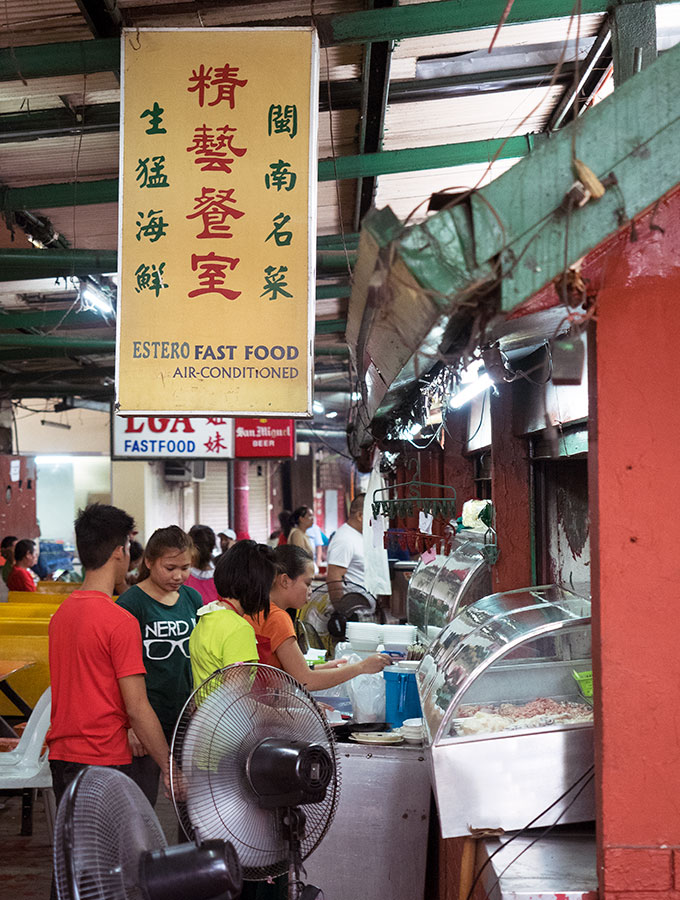

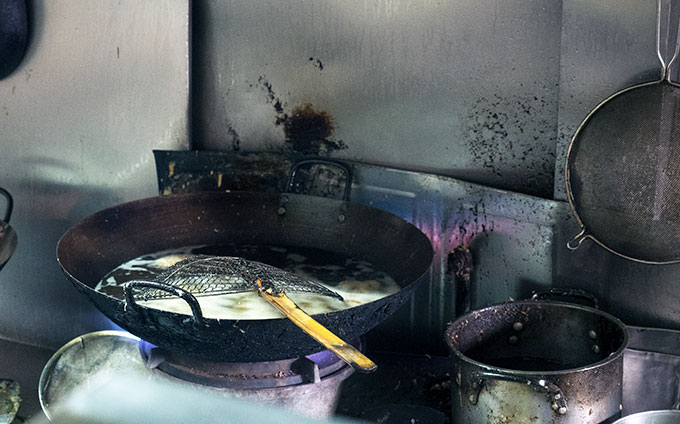 Chinatown Food tour of Manila – Calesa or Horse Drawn Carriages
Chinatown Food tour of Manila – Calesa or Horse Drawn Carriages
It’s hard not to miss the old world calesa around Binondo. They are around to serve the tourist trade and do make a fun way to see the sights. They can also be found at Intramuros, Fort Bonifacio and Rizal Park.
Make sure you negotiate the fee with the driver before you depart on your horse drawn adventure. The price for locals is PHP 300 for two people for 30 minutes. The longer you ride for the more stops you make, the more expensive it will be.
Of course they will tell you it is more expensive than PHP 300, so haggle them down in price. Expect to pay a lot more (from PHP 2,000) if you arrange a ride through a travel agency, hotel etc.
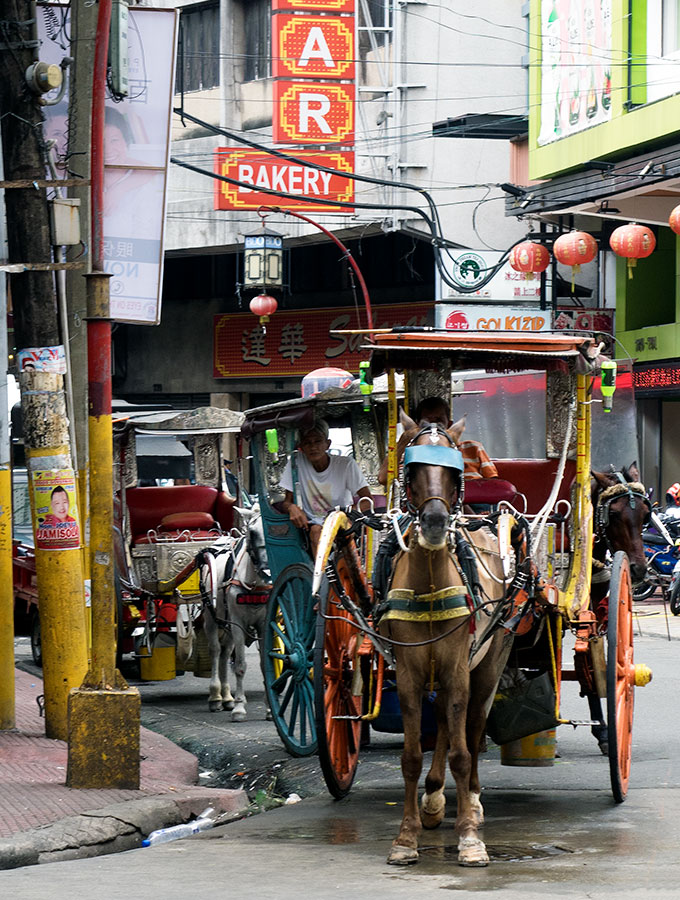
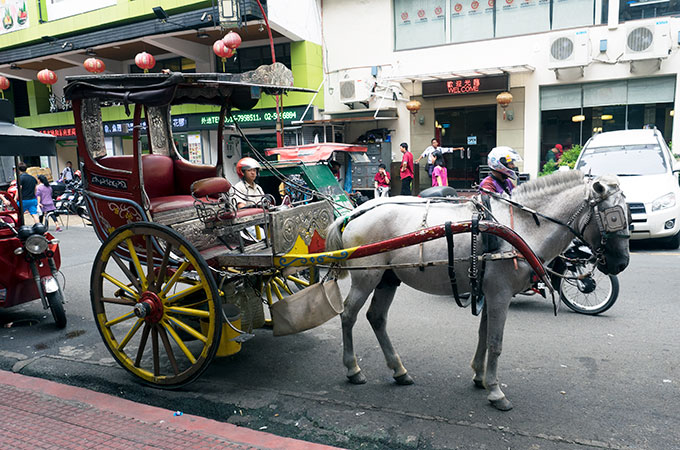
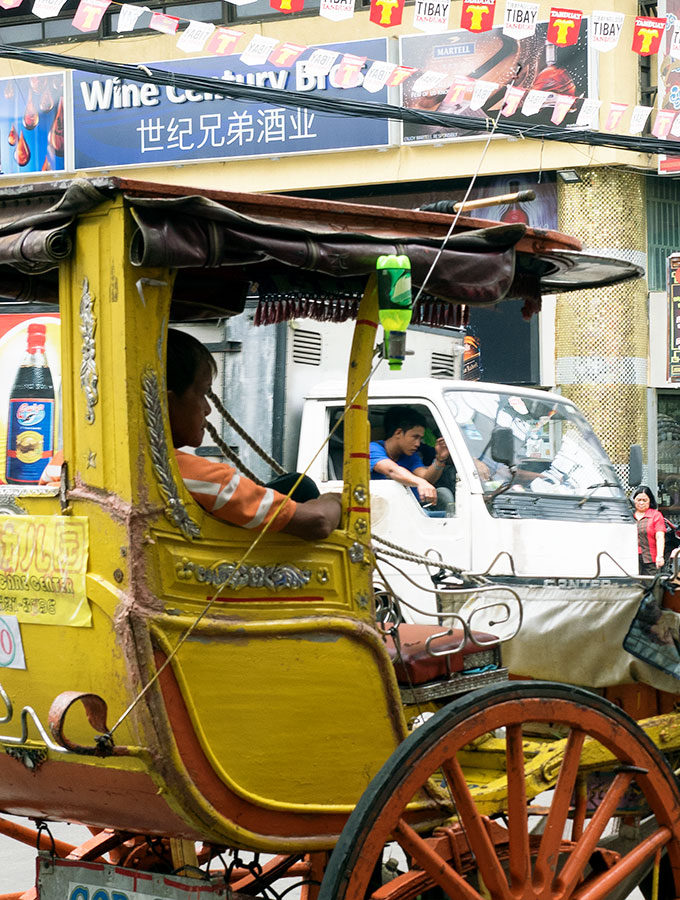 Chinatown Food tour of Manila – 7th Stop: Eng Bee Tin Chinese Deli
Chinatown Food tour of Manila – 7th Stop: Eng Bee Tin Chinese Deli
Our last stop is at the pioneers of Hopia in Manila, Eng Bee Tin. There are numerous outlets around town. They also own and run various other businesses. Just look for purple, it’s a pretty safe bet they own the business or building.
Hopia are very similar to Chinese moon cakes. A dense pastry surrounding a flavoured filling. We grab some ube (purple yam) flavoured ones to take with us for later.
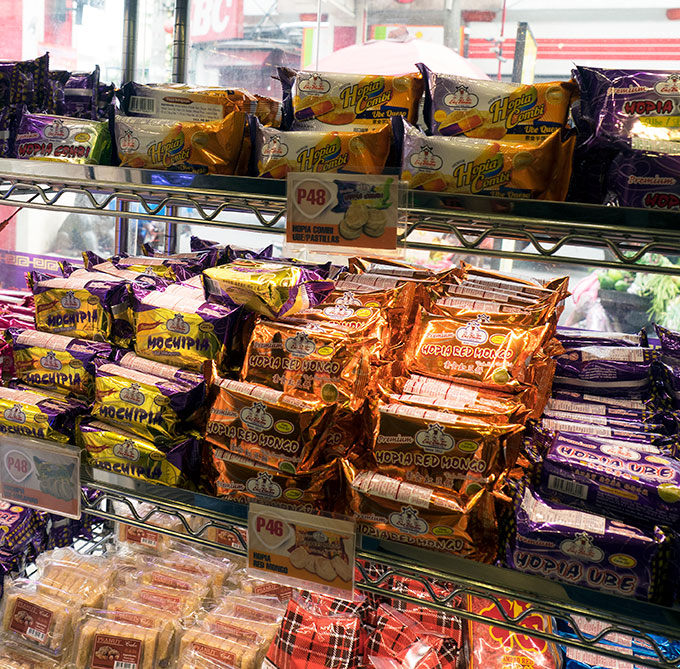
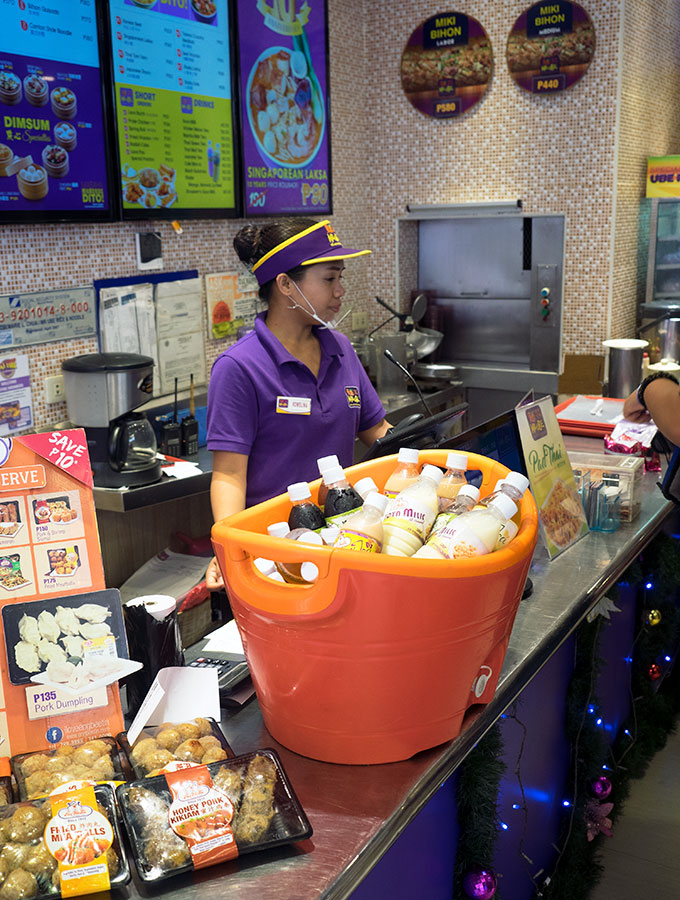 Chinatown Food tour of Manila – Who to tour with?
Chinatown Food tour of Manila – Who to tour with?
Josh and I chose to do our Chinatown Food tour of Manila with Yolo Travel Philippines (we paid for our tour). The main reason why I went with them is that their tour went for 5 hours instead of 3 ½ and they arranged to pick us up and drop us back at our hotel (we had a lot of camera gear). Which was 100% on the easy scale and longer food eating time.
Saying that, it seems that they now only offer a 3 ½ hour tour like everyone else, but covering the same amount of food we ate.
Looking for accommodation in Manila? Have a read of my Sofitel Philippine Plaza and Peninsula reviews.
The other option you have is to walk around and discover Binondo at your own pace.
Sara xxx
Become a subscriber and don’t miss a single delicious recipe, restaurant review or travel adventure.




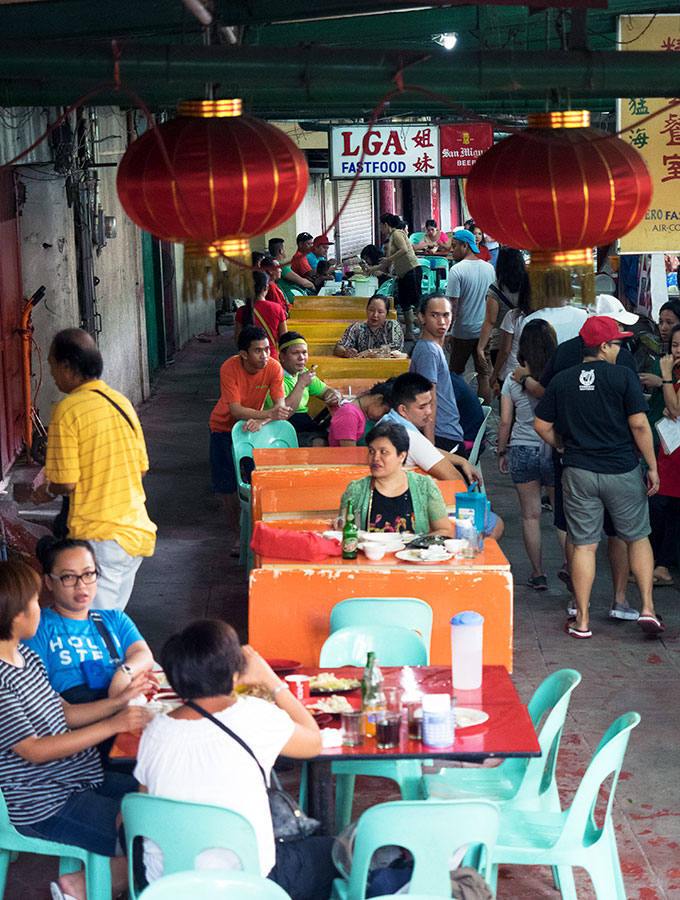
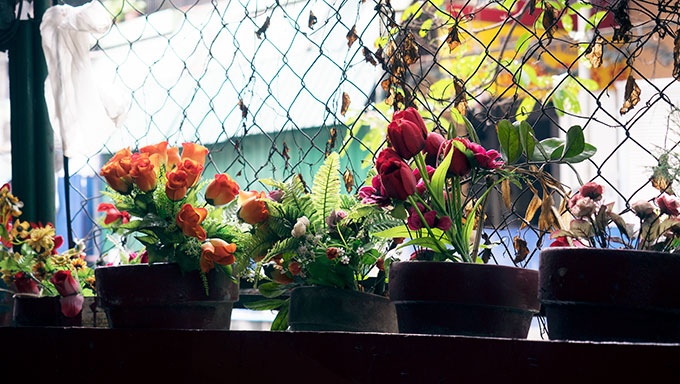
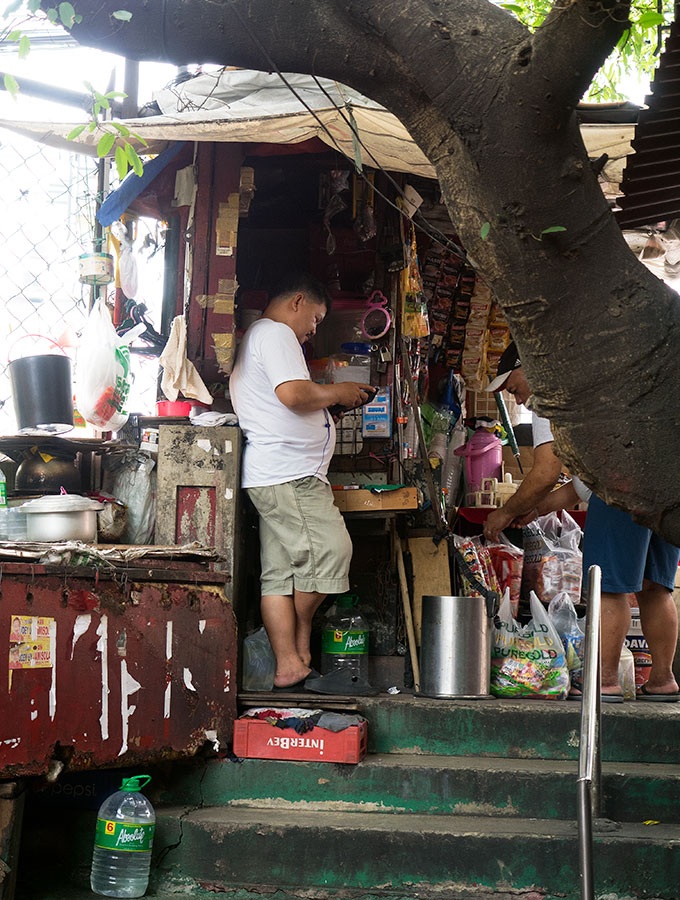
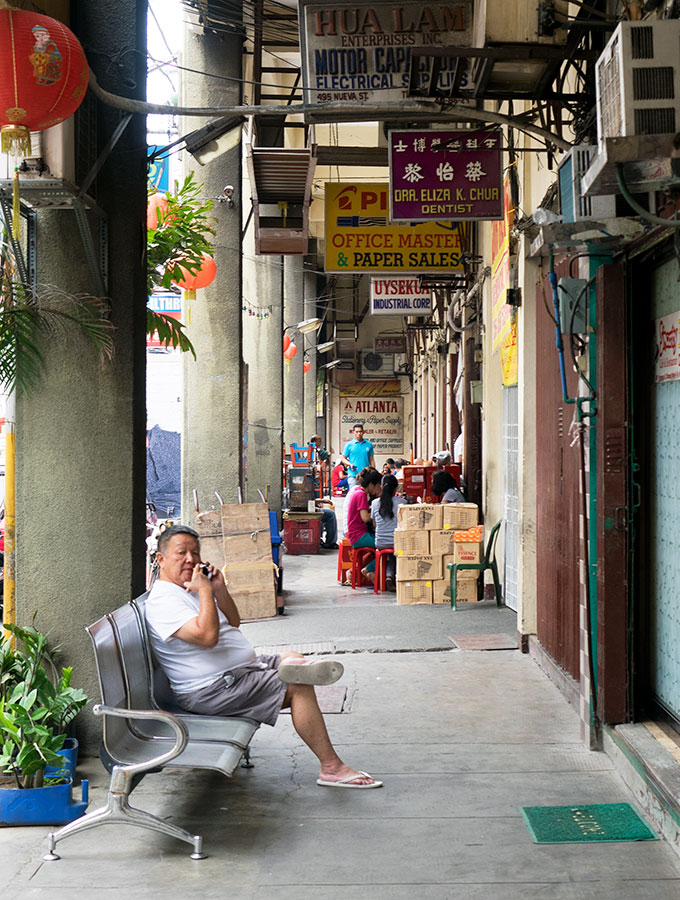
Joe Ng
Great pics... well written, and encouraged me to visit. Thanks for the contribution and shared experience.
Helen | Grab Your Fork
So many great street shots here, Sara. A shame you didn't dig the oyster cake, but I agree, the crispy oyster omelette is much more tempting!
Vicky and Buddy
I love dumplings, so I would be all over this tour! And how interesting to learn about the firetrucks. Those power lines really do look so unsafe, so I can see why the trucks are everywhere. I'd hate to see so much good food go up in flames!
Natasha
I should not of read this post while hungry! All the food looks delicious! I've been wanting to get to the Philippines but this just confirms that I need to book that ticket!
Laura Lynch
I also love food tours. We go on one almost everywhere we go. And I can see a tour in Manila's Chinatown being a real highlight. Those dumplings look heavenly. I'm not so sure about the testicle/penis soup, but I'd try it at least. And the oyster cakes. That's a very interesting idea. I think I'll try that at home.
Carol Perehudoff
Count me in for the pork and chive dumplings but I'll take a pass on the testicles. I was in Manilla just once but I'd never thought of doing a food tour. What a great idea.
RaW | Ramble and Wander
"In China they would just call it “heading down the street to go shopping”." LOL! Coming from Malaysia, where there's a large population of local Chinese, I've tried a few Chinese food, some, I really like, like dumplings and oyster cakes. Most others, not so much, probably because they are rather bland, as in lack of spice, which is what I tend to prefer when it comes to food. Haven't tried frog though, and I don't think I'd ever give it a shot, heh!
I wonder though if there's much variation of Chinese food in general, from one China Town to another in different countries.
Sumti
I loved the photo of this post 🙂 Loved reading the post.
Indrani
I don't think I can taste them all particularly the bull's whatever... But those dumplings wrapped in leaves sure do look nice. The claw in the soup surprised me, do they have food value?
Hugo Cura
I'm not the biggest fan of Chinese food but recently started to love dumplings and a few other things. It's a matter of acquired taste, I guess!
This sounds like a very cool a filling tour! Definitely worth doing.
Fiona Maclean
I've been taught how to fold dumplings so many times - and I still can't do it!
Good on you for trying most of the food - I HAVE had chicken feet and hated them. But I really don't think I'd have been into testicles!
Drew
What a great food tour! I am a huge dumpling fan, so I would have eaten a million of those pork and chive dumplings. I also agree with you on the oyster omelette. I like oysters, but never been a huge fan of the Chinese oyster omelettes.
I also had no idea that Manilla had the oldest Chinatown. What a long history that neighborhood has in Manilla. I am hoping to be living in Hong Kong by next month, so looking forward to eating a lot of these things on a daily basis!
Liz @ I Heart Vegetables
That sounds like SUCH a fun adventure! My favorite part of taking a vacation is definitely getting to try new foods!
Diana
Beautiful pictures! I really want to visit Manilla one day, it would be really cool to explore the city and the foodie places there!
Annie @ Annie's Noms
I had no idea which was the oldest Chinatown in the world! I certainly enjoy it when we go into London and head to Chinatown. It's my favourite place to go, I just love all of the food and the atmosphere! Binondo looks wonderful! I'd love to explore Chinatown's in other countries!
Sarah @ Champagne Tastes
I've got a friend who was born in the Philippines.. her cooking is fantastic! I'm super jealous of your trip- I'd love to have eaten my way through Manila's Chinatown with you!
Thanh | Eat, Little Bird
What great travel tips! I've never been to the Philippines but have heard so many things about the place. Sounds like you ate well on this trip 🙂
Ramen Raff
Love the oyster cake at Sincerity. When you go back to Cafe Mezzanine, have the halo halo, massive for what you pay for it and sooooo damn good.